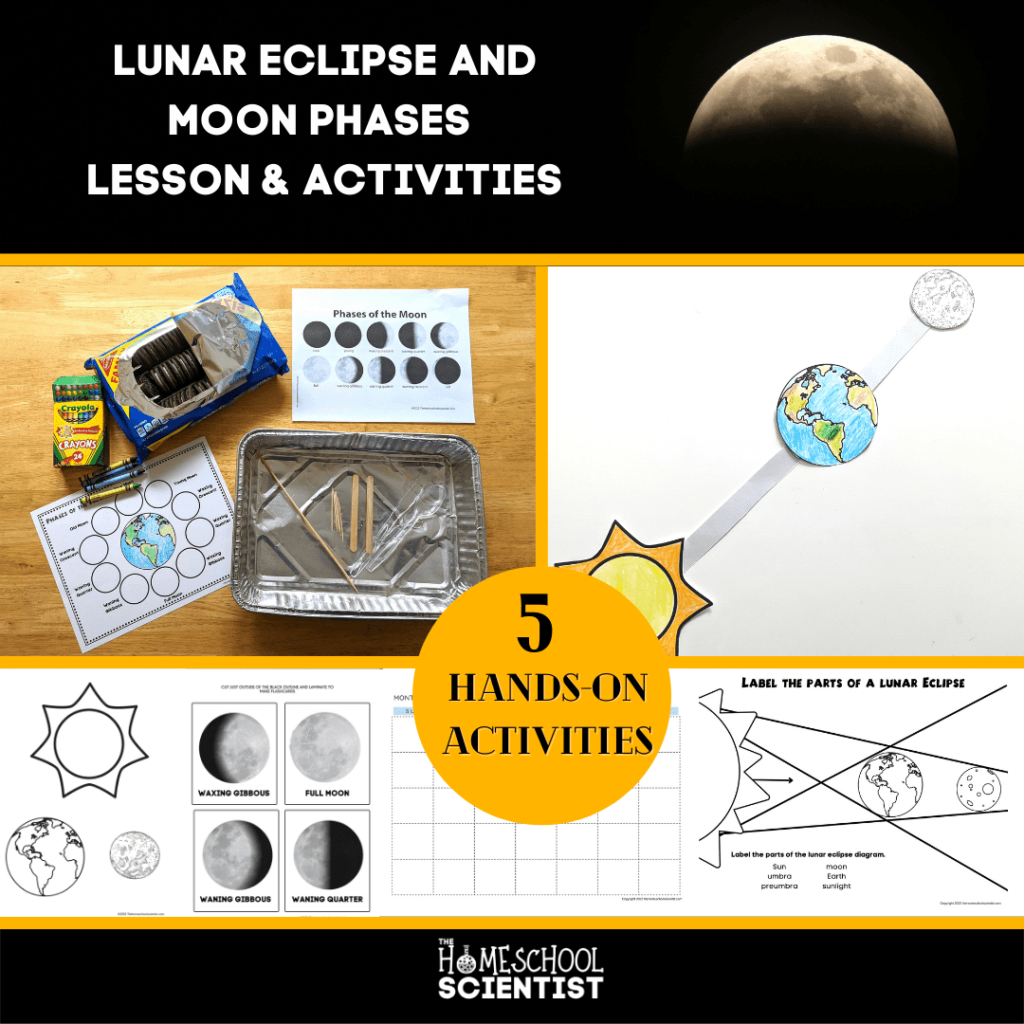Lunar Eclipse Activities for Kids
What is a lunar eclipse?
A lunar eclipse happens when the moon passes through the Earth’s shadow. The result is a gradual darkening of part or nearly all the of the moon, making a partial or full eclipse, respectively.

This gradual darkening of the moon is a result of the moon moving through the 2 parts of the Earth’s shadow. The “prenumbra” is the lighter part of the shadow. The effect of this shadow is barely seen in an eclipse. The “umbra” is the dark part of the shadow. This will almost totally block the light of the sun from shining on the moon.
Three Types of Lunar Eclipses
Lunar eclipses can be seen in three types.
-
Prenumbral – These occur when the moon passes through just the Earth’s prenumbral shadow. These eclipses are very subtle. The change to the view of the moon is hard to see.
-
Partial – These happen when part of the moon passes through the Earth’s umbral shadow. Partial eclipses are easy to see because of the dark umbral shadow cast on the moon.
-
Total – These happen when the entire Moon passes through Earth’s umbral shadow. Total eclipses are brilliant to behold. Almost the entire moon is covered by the umbral shadow except for a ring of light around the moon that is often bright red or orange. The color of the ring is caused by dust in the Earth’s atmosphere bending the light that strikes the moon.
How To View A Lunar Eclipse?
To find the date and times of upcoming lunar eclipses, go to this handy eclipse calculator which works by city.
A lunar eclipse is easily visible to the naked eye. Of course, you can always use binoculars or telescopes to get a better view. You might be able to see the moon through your windows or you might need to go outside. Just remember, lunar eclipses are long processes. If you miss a few minutes trying to find the right viewing area and method, you won’t miss much
Have fun!
Request and Download our FREE Moon Phases and Lunar Eclipse Activities for Kids. You will be added to our e-newsletter community.

Other Resources and Ideas for Lunar Eclipse Lessons for Kids
From NASA/JPL: Evaluate a Lunar Eclipse (Grades 3-12)
Visit NASA’s lunar eclipse page
I hold a master’s degree in child development and early education and am working on a post-baccalaureate in biology. I spent 15 years working for a biotechnology company developing IT systems in DNA testing laboratories across the US. I taught K4 in a private school, homeschooled my children, and have taught on the mission field in southern Asia. For 4 years, I served on our state’s FIRST Lego League tournament Board and served as the Judging Director. I own thehomeschoolscientist and also write a regular science column for Homeschooling Today Magazine. You’ll also find my writings on the CTCMath blog. Through this site, I have authored over 50 math and science resources.



